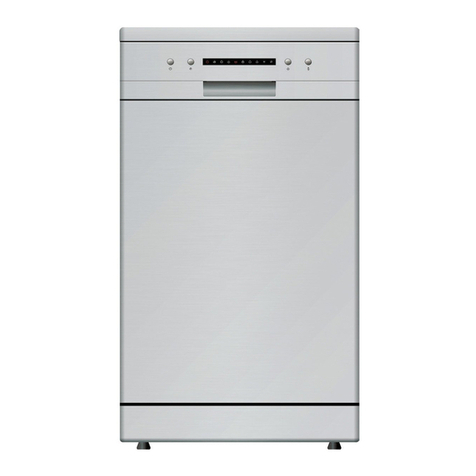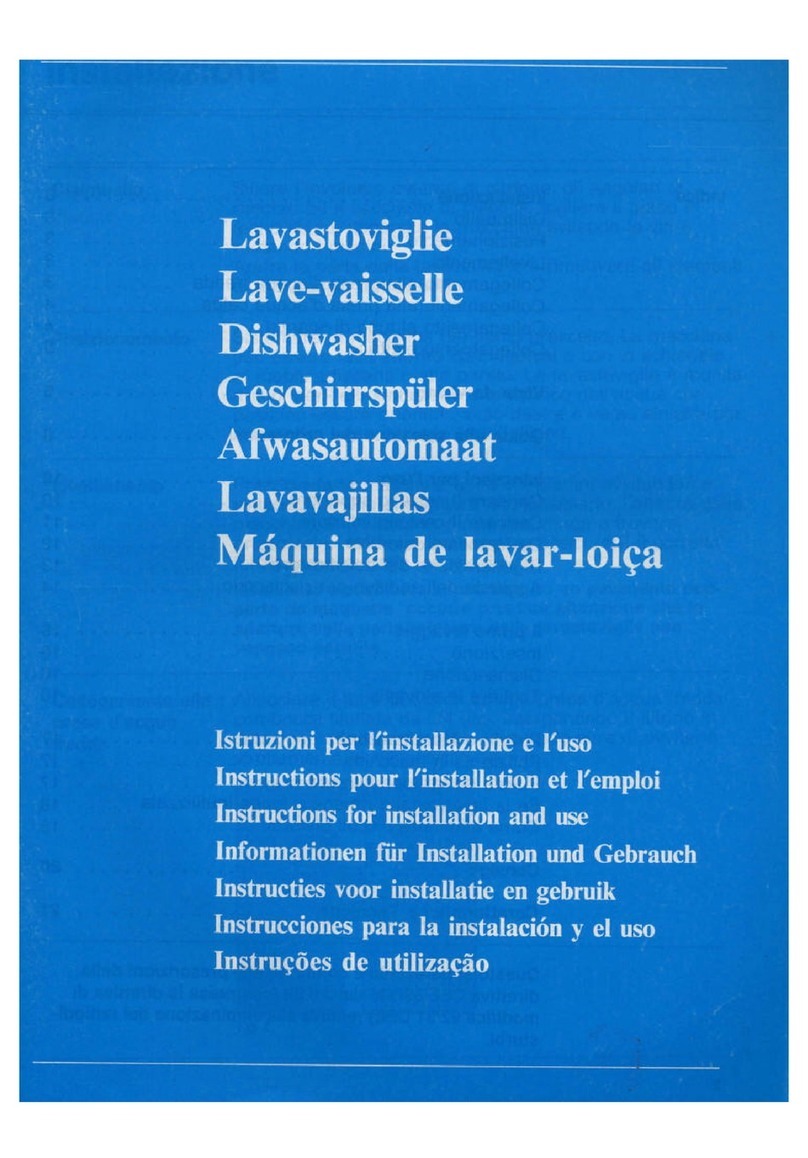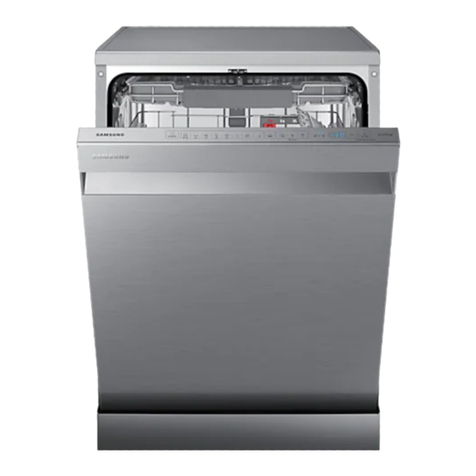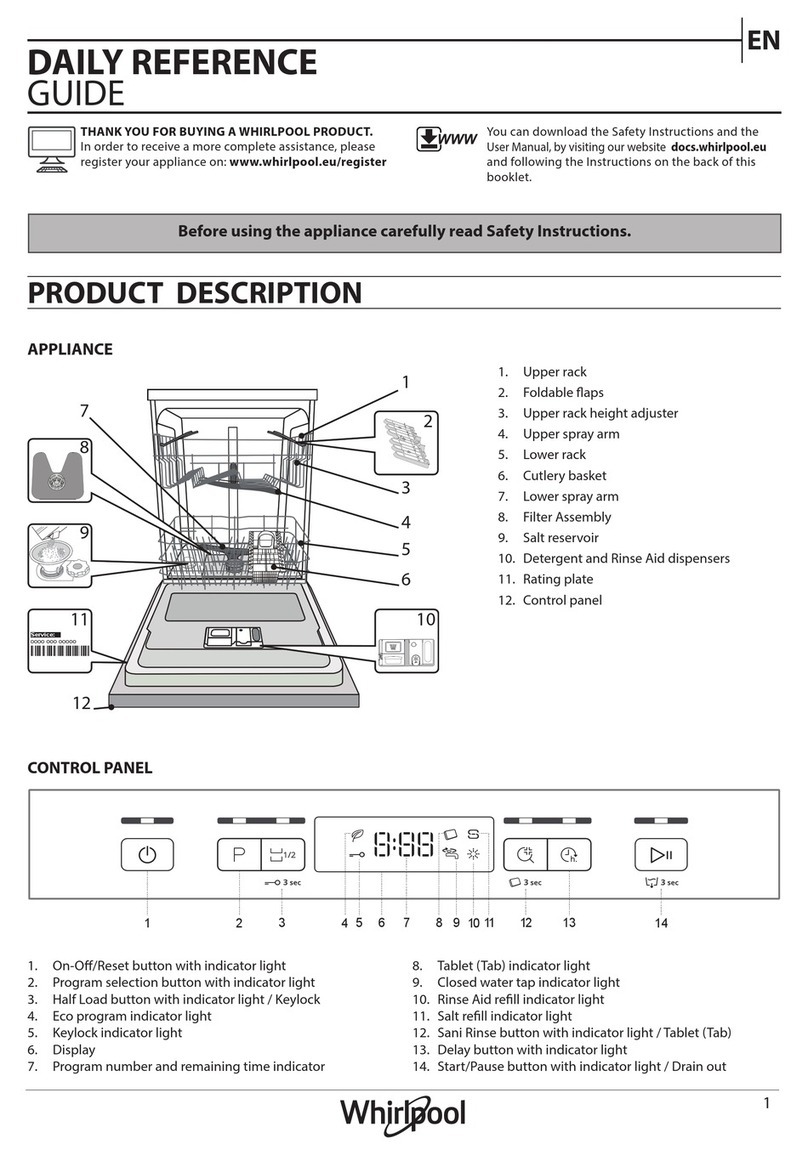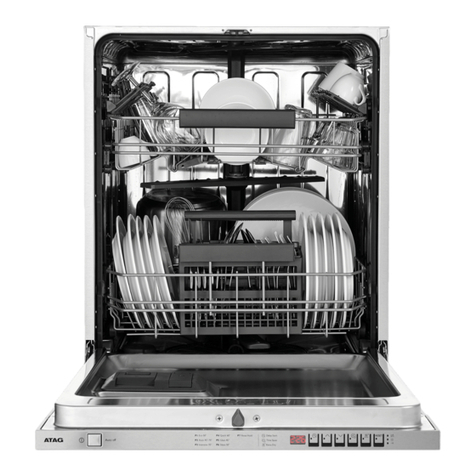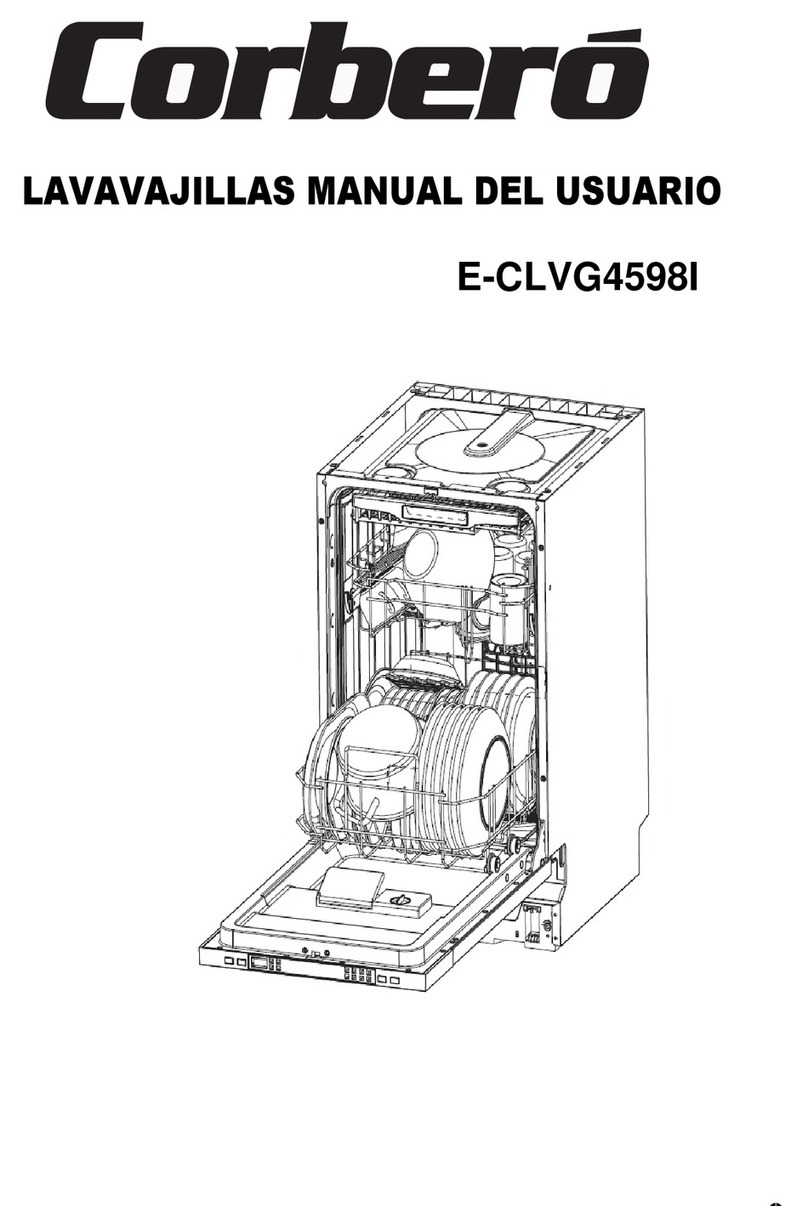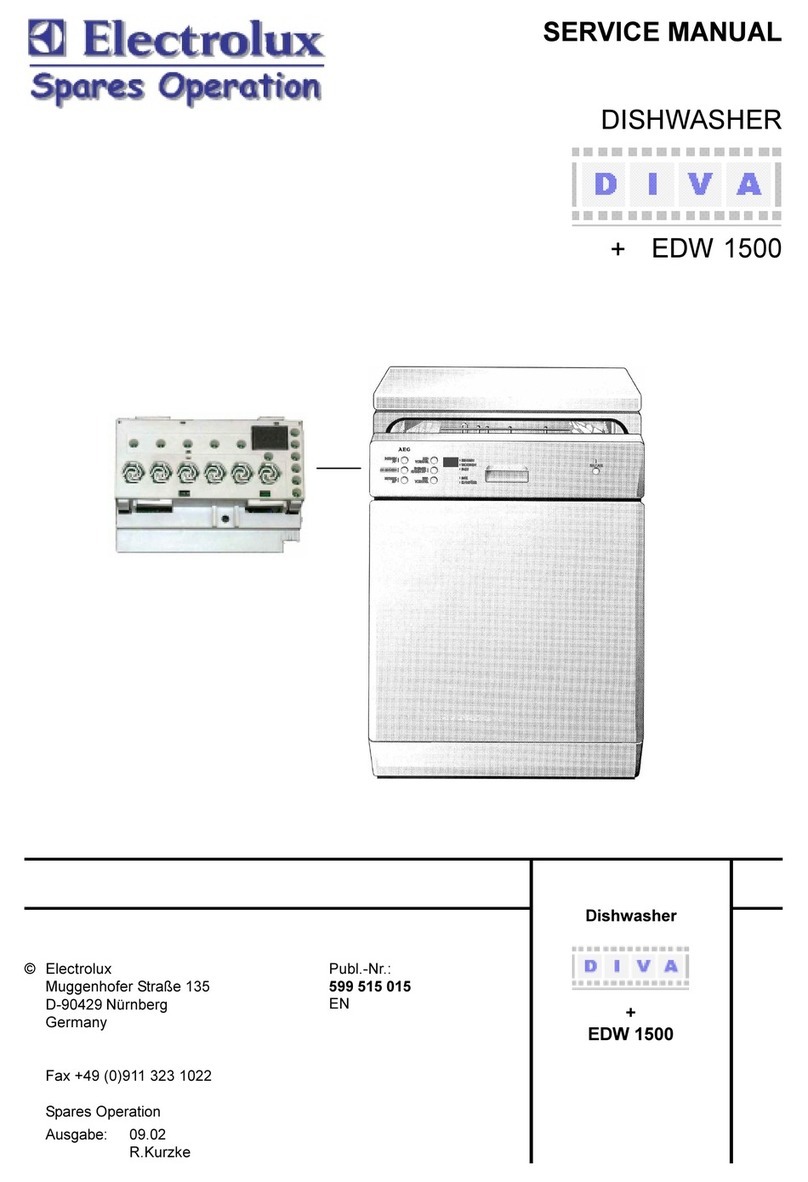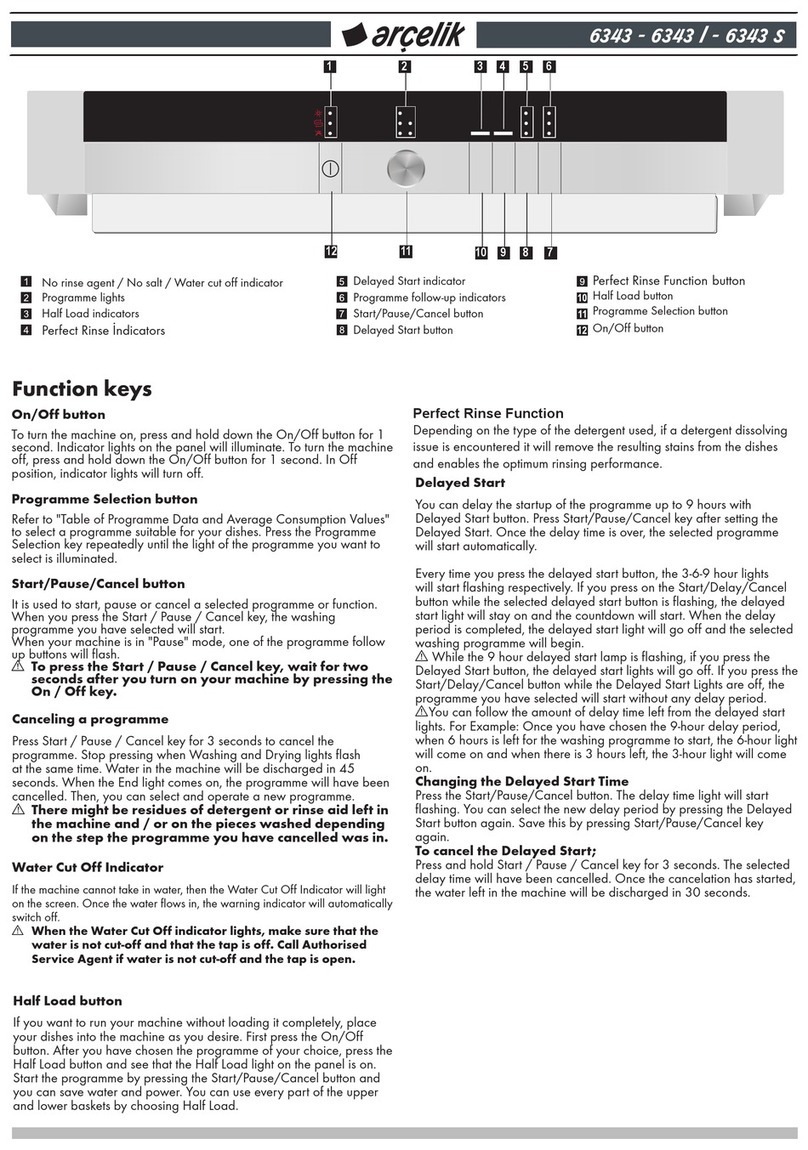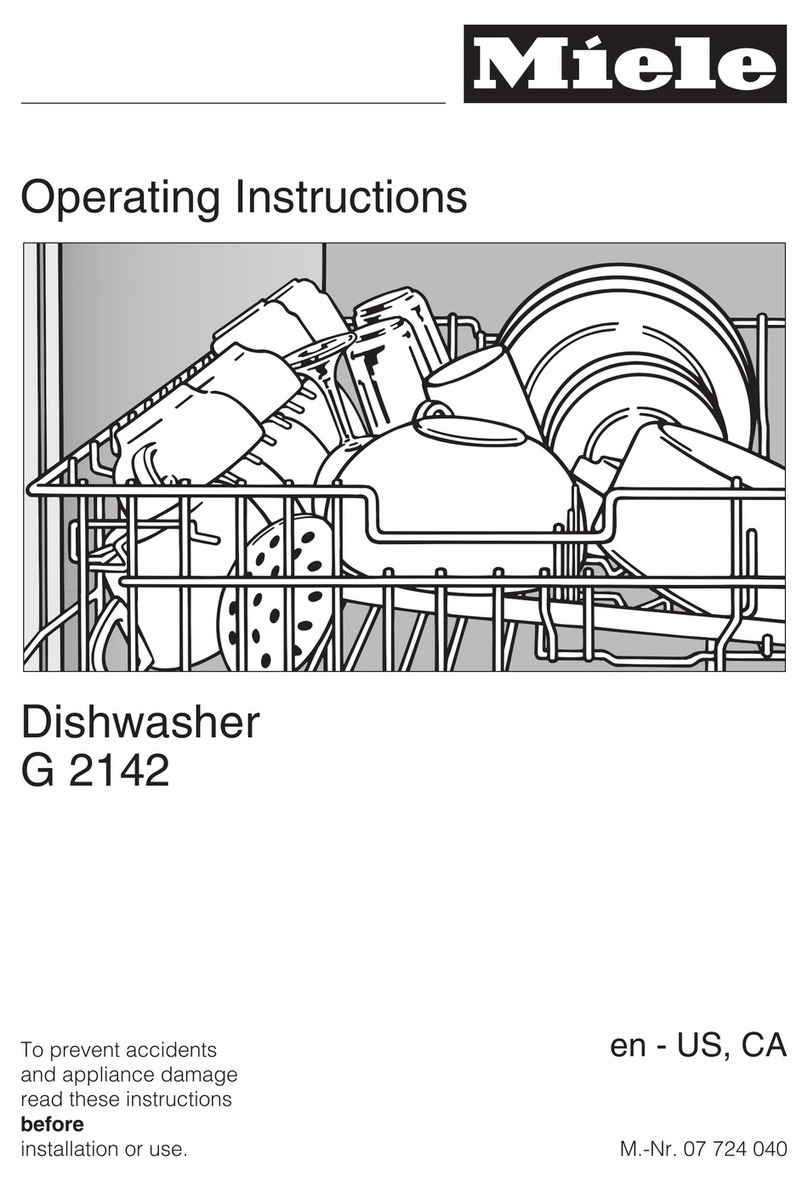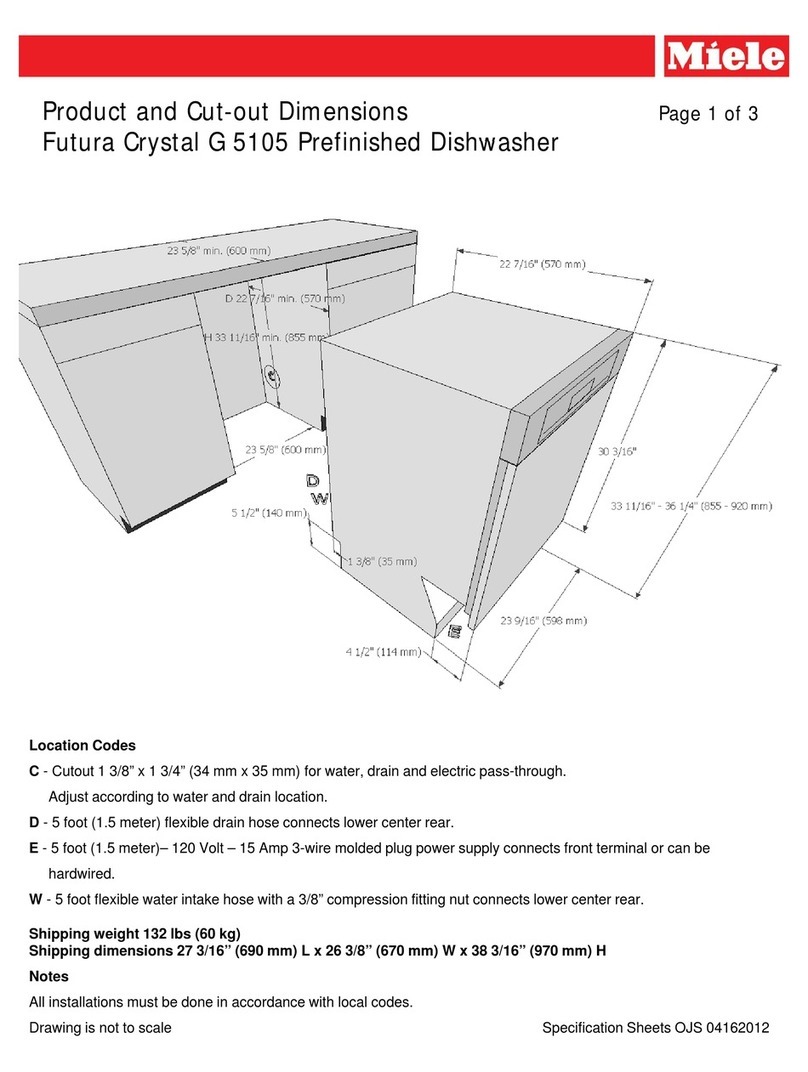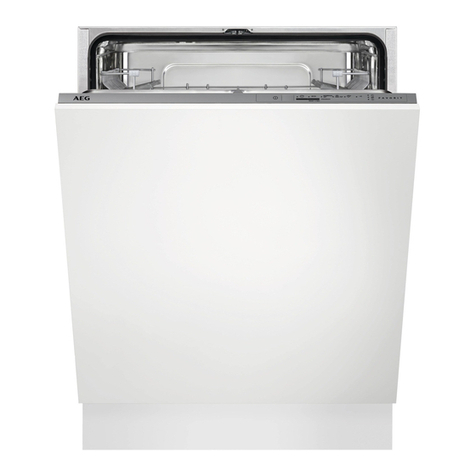Elfa DS9568 User manual

DS9568

To review the section on Troubleshooting Tips
will help you to solve some common problems
by yourself and not need to ask for the help of
professional technicians.
Dear Customer,
Pleaseread this User Information carefully and keep it
to refer to at a later date.
Pass it on to any subsequent owner of the appliance.
This manual contains sections of Safety Instructions,
Operating Instructions,
Installation Instructions and Troubleshooting Tips etc.
Carefully reading it before using the dishwasher will help
youtouseandmaintainthe dishwasher properly.
The manufacturer, following a policy of constant
development and up-dating of the product, may
make modifications without giving prior notice.
Control Panel......................................................2
Dishwasher Features...........................................2
Rinse Aid.........................................................3, 4
Detergent........................................................ 5
Not suitable for the dishwasher............................9
At the end of the wash cycle ................................10
Wash Cycle Table...............................................11
Turning on the Appliance.................................... 12
Change the Programme................. ............. 12........
Filtering System..................................................13
Caring for the Dishwasher..........................13,14, 15
Before calling for service...............................24, 25
Error codes.......................................................25
....................................... 26Technical information
Forget to add a Dish................. ...................13........
How to use the 3in1 programme........................... 6
Water Connection...............................................22
....15Please carefully read the installation instruction
........16Aesthetic panel's dimensions and installation
Tension adjustment of the door spring ................17
Connection of drain hoses...........................................18
Dishwasher installation steps..............................19
About Electricity Connecting................................21

Under certain conditions, Hydrogen gas may be produced in a hot-water system that has not been used for two
weeks or more. HYDROGEN GAS IS EXPLOSIVE.If the hot-water system has not been used for such a period,
before using the dishwasher turn on all hot-water faucets and let the water flow from each for several minutes.
This will release any accumulated hydrogen gas. As the gas is flammable, do not smoke or use an open flame
during this time.
•
•
•
•
•
•
•
•
•
•
•
•
•
•
Do not abuse, sit on, or stand on the door or dish rack of the dishwasher
Do not touch the heating element during or immediately after use
Do not operate your dishwasher unless all enclosure panels are properly in place. Open the door very
carefully if the dishwasher is operating. There is a risk of water squirtingout.
Do not place any heavy objects on the door when it is open, or the appliance could tip forward.
When loading items to be washed:
Locate sharp items so that they are not likely to damage the door seal;
Load sharp knives with the handles up to reduce the risk of cut-type injuries;
Warning: knives and other utensils with sharp points must be loaded in the basket with their points down
or placed in a horizontal position.
When using your dishwasher, you should prevent plastic items from contacting with heating element.
Check that the detergent receptacle is empty after completion of the wash cycle.
Do not wash plastic items unless they are marked dishwasher safe or the equivalent. For plastic items not
so marked, check the manufacturer's recommendations.
Use only detergent and rinse additives designed for an automatic dishwasher. Never use soap, laundry
detergent, or hand washing detergent in your dishwasher.
Keep children away from detergent and rinse aid, keep children away from the open door of the dishwasher,
there could still be some detergent left inside.
Young children should be supervised to ensure that they do not play with the appliance.
The appliance is not intended for use by young children or infirm persons without supervision.
Dishwasher detergents are strongly alkaline. They can be extremely dangerous if swallowed. Avoid contact
with skin and eyes and keep children away from the dishwasher when the door isopen.
The door should not be left in the open position since this could present a tripping hazard.
This dishwasher is designed for normal household and indoor use.
o
o
o
•
•
•
•
•
•
•
If the supply cord is damaged, it must be replaced by the manufacturer or its service agent or a similarly
qualified person in order to avoid a hazard.
Please dispose of packing materials properly.
Use the dishwasher only for its intended function.
During installation, the power supply must not be excessively or dangerously bent or flattened.
Do not tamper with controls.
The appliance is to be connected to the water mains using new hose sets and the old hose-sets should not
be reused.
This appliance is not intend for use by persons(include children) with reduced physical , sensory or mental
capabilities, or lack of experience and knowledge, unless they have been given supervision or instruction
concerning use of the appliance by a person responsible for their safety
Please unplug before cleaning the appliance.
•
•
1

To get the best performance from your dishwasher,read all operating instructions before using it for the
first time.
11
12
Back View
Main Filter
5
Detergent Dispenser
6
Cup Shelf
7
Silverware Basket
8
Coarse Filter
9
Rinse Aid Dispenser
10
Inlet pipe connector
12
Drain pipe connector
11
Lower Basket
3
Spray Arms
2
Upper Basket
1
4
Tray ass.
10
Front view
2
4
Half washing :To select half washing.
(Optional half washing means that the lower spray arm
does not run, so you should load the upper basket only).
button
Powerlight:TocomeonwhenPowerON/OFF
button is pressed down.
9
8
7
6
Half washing light: To come on when select the
Half wash.
ON/OFF Button: To turn on/off the power supply.
Display: To display delay time or error codes.
5
3
1
Rinse Aid Warning Light: To come on when
the dispenser needs to be refilled.
2
Program indicator light: when you select washing
program, the correspond light will display.
Program button :To select washing program
when press the button.
Delayed Start Button: Press this button to set the
delayed hours for washing. You can delay the start
of washing up to 24 hours. One press on this
button delays the start of washing by one hour.
1
577 9
4
39
6
58
7
Heavy Rinse 3 In1
Normal Soak
Rapid
1
2
1
2
3
4
5
6
7
8
9
Intensive

Before using your dishwasher for the first time:
A. Fill the rinse aid dispenser
B. Function of detergent
3
Rinse aid is automatically added during the last rinse, ensuring thorough rinsing, spot
andstreakfreedrying.
Only use branded rinse aid for dishwasher. Never fill the rinse aid dispenser with any
other substances (e.g. dishwasher cleaning agent, liquid detergent). This would damage
the appliance.
Astherinseaiddiminishes,thesizeoftheblackdot
on the rinse aid level indicator changes, as illustrated right.
Full
3/4full
1/2full
1 / 4 full - Should refill to eliminate spotting
Empty
If there is no rinse-aid w arning light in the control panel, you can judge the amount of rinse-aid by the color of the optical level
indicator "D" located next to the cap. When the rinse-aid container is full, the whole indicator will be dark . As the rinse-aid
diminishes, the size of the dark dot decreases. You should never let the rinse aid get below 1 / 4 full.
D (Rinse-Aid indicator)
OPEN
CLOSE
To open the dispenser, turn the cap to the "open" (left) arrow and lift it out.
Pour the rinse aid into the dispenser, being careful not to overfill.
Replace the cap by inserting it aligned with "open" arrow and turning it to the closed (right) arrow.
The rinse aid is released during the final rinse to prevent water from forming droplets on your dishes
that can leave spots and streaks. It also improves drying by allowing water to sheet off the dishes.
Your dishwashers are designed to use liquid rinse aids. The rinse aid dispenser is located inside the
door next to the detergent dispenser. To fill the dispenser, open the cap and pour the rinse aid into
the dispenser until the level indicator turns completely black. The volume of the rinse aid container
is about 140ml.
Be careful not to overfill the dispenser, because this could cause over sudsing. Wipe away any spills
with a damp cloth. Don't forget to replace the cap before you close dishwasher door.
Attention!
Clean up any rinse aid split during filling with an absorbent cloth to avoid excess foaming
during the next wash.
1
2
3
The rinse aid dispenser has six or four settings. Always start with the dispenser set on
“2”. If spots and poor drying are problems, increase the amount of rinse aid dispensed
by removing the dispenser lid and rotating the dial to “3”. If the dishes still are not
drying properly or are spotted, adjust the dial to the next higher number until your dishes
are spot-free. We suggest you to set on “4”(Factory value is “4”)
NOTE:
Increase the dose if there are drops of water or lime spots on the dishes after washing.
Reduce it if there are sticky whitish streaks on the dishes or a bluish film on glassware or
knife blades.
Adjust lever
(Rinse)
MAX

Based on their chemical composition, dishwasher can be split in two basic types:
conventional, alkaline detergents with caustic components
low alkaline concentrated detergents with natural enzymes
The use of “heavy” washing programmes in conjunction with concentrated detergents
reduces pollution and is good for your dishes; these wash programmes are specially matched
to the dirt-dissolving properties of the enzymes of the concentrated detergent. For this reason
“heavy”wash programmes in which concentrated detergents are used can achieve the
same results that can otherwise only be achieved using “intensive” programmes.
Detergent tablets of different brands dissolve at different speeds. For this reason some
detergent tablets cannot dissolve and develop their full cleaning power during short
programmes. Therefore please use long programmes when using detergent tablets, to
unsure the complete removal of detergent residuals.
The dispenser must be refilled before the start of each wash cycle following the instructions
provided in the Wash Cycle Table. Your dishwashers use less detergent and rinse aid
then conventional dishwashers. Generally, only one tablespoon of detergent is needed for
a normal wash load. Also, more heavily soiled items need more detergent. Always add the
detergent just before starting dishwasher, otherwise it could get damp and will not dissolve
properly.
Amount of Detergent to Use
Always add the detergent just before starting each wash cycle.
Only use branded detergent aid for dishwasher.
If the lid is closed: press release button. The lid springs open.
Dishwasher detergent is corrosive! Take care to keep it out of reach of children.
Proper Use of Detergent
Use only detergent specifically made for use in dishwashers. Keep your detergent fresh
and dry. Don't put powder detergent into the dispenser until you're ready to wash dishes.
4
Concentrated Detergent
Detergent Tablets
Detergent Dispenser
Detergents with its chemical ingredients are necessary to remove dirt, crush dirt and
transport it out of the dishwasher. Most of commercial quality detergents are suitable
for this purpose.
1
2

5
Fill the detergent dispenser with detergent.
The marking indicates the dosing levels , as
illustrated on right:
The place of main wash cycle detergent placed ,
“MIN”means approximately 20g of detergen.
The place of pre-washcycle detergent placed,
approximately 5g of detergent
Please observe the manufacturers dosing and storage
recommendations as stated on the detergent packaging.
Close the lid and press until it locks in place.
If the dishes are heavily soiled, place an additional detergent dose in the pre-wash detergent
chamber. This detergent will take effect during the pre-wash phase.
You findinformation about the amount of detergent for thesingle programmes on the
last page. Please aware, that according to the level soiling and the specific hardness of
water differences are possible.
Please observe the manufacturer's recommendations on the detergent packaging.
Detergents
There are 3 sorts of detergents
1.With phosphate and with chlorine
2.With phosphate and without chlorine
3.Without phosphate and without chloride
Normally new pulverised detergent is without phosphate. The water softener function of
phosphate is not given. In this case we recommend to fill salt in the salt container even when
the hardness of water is only 6 dH. If detergents without phosphate were used in case of hard
water often white spots appear at dishes and glasses. In this case please add more detergent
to reach better results. Detergents without chlorine do only bleach a little. Strong and coloured
spots will not removed completely. In this case please choose a programme with higher
temperature.
NOTE:
1
2
Fill in detergent

1、Referringtothebelowsketchmap,hangthe3in1tabletcontainerontheupper basket.
2 Referring to the below sketch map, r change the location of the container if need、 otate the upper sprayer and to make
sure the upper sprayer does not be cumbered by the 3 in 1 tablet container.
Your dishwasher has a 3 in 1 program which needs not salt and rinse aid but a 3 In1
tablet. And this dishwasher comes with a 3 in 1 tablet container as an accessory.
NOTE: Only 3 in 1 program uses 3 in 1 tablet. If using 3 in 1 tablet in other programs, the
appliance will not get a best performance.
3、Put the 3 in 1 tablet into the container then start the 3 in 1 program.
When use 3 in 1 Combination / Compact Deter-
“
Gents ,please pay attention to make sure that the size of the Combination Detergents
is fitted to the dispenser so that Combination Detergents can be ease to put in the
,
dispenser ,and dispenser would not be broken.
Attention
Keep all detergents in a safe place out of children's reach.
Always add the detergent in the dispenser just before starting the dishwasher.
NOTE:
6

For best performance of the dishwasher, follow these loading guidelines. Features and
appearance of racks and silverware baskets may vary from your model.
Scrape off any large amounts of leftover food. It is not necessary to rinse the dishes under
running water. Place objects in the dishwasher in following way:
1.Items such as cups, glasses, pots/pans, etc. are stood upside down.
2.Curve items, or those with recesses, should be at a slant so that water can run off.
3.They are stacked securely and can not tip over.
4.They do not prevent the spray arms from rotating while washing takes place.
Very small items should not be washed in the dishwasher as they could easily fall out of the racks.
To prevent water dripping from the upper back into the lower back, we recommend that you
empty the lower basket first and then the upper back.
The upper rack is designed to hold more delicate and lighter dishware such as glasses, coffee
and tea cup and saucers, as well as plates, small bowls and shallow pans (as longastheyare
not too dirty).
Position the dishes and cookware so that they do not get moved by the spray of water.
Attention before or after Loading the Dishwasher Racks
Removing the Dishes
Loading the Upper Rack
Adjusting the Upper Rack
If required, the height of the upper rack can be adjusted in order to create more space for large
utensils either in the upper rack or lower rack. The upper rack can be adjusted for height by
putting wheels of different height into the rails. Long items, serving cutlery, salad servers or
knives should be placed on the shelf so that they do not obstruct the rotation of the spray arms.
The shelf can be folded back or removed when not required for use.
7
4
3
1
1
Cups
2
Glasses
Saucers
3
4
Dessert dishes
1
1
1
2
22
1

We recommend that you place large items which are most difficult to clean into the lower rack:
pots, pans, lids, serving dishes and bowls, as shown in the figure to the right.
It is preferable to place serving dishes and lids on the side of the racks in order to avoid blocking
the rotation of the top spray arm.
Pots, serving bowls, etc. must always be placed top down.
Deep pots should be slanted to allow water to flow out.
The bottom rack feature fold down tine rows so that larger or more pots and pans can be loaded.
To improve stacking of pots and pans, the spikes can be folded down
Dessert dishes
4
5
Dinner plates
6
Soup plates
7
Silverware basket
6
74
5
5
8

Silverware Basket
Silverware should be placed in the silverware basket with handles at the bottom: If the rack
has side baskets, the spoon should be loaded individually into the appropriate slots,
especially long utensils should be placed in the horizontal position at the front of the
upper rack.
Cutlery with wooden, horn china or
mother-of-pearl handles
Plastic items that are not heat resistant
Older cutlery with glued parts that is not
temperature resistant
Bonded cutlery items or dishes
Pewter or cooper items
Lead crystal glass
Steel items subject to rusting
Wooden platters
Items made from synthetic fibres
Do not put in items that are dirty of
cigarette ash, candle wax, lacquer or
paint. If you buy new dishes please make
sure that they are suitable for dishwashers.
Some types of glasses can become
dull after a large number of washes
Silver and aluminium parts have a
tendency to discolour during washing
Glazed patterns may fade if machine
washed frequently
Please do not overload your dishwasher. There is only space for 12 standard dishes. Do not
use dish that is not suitable for dishwashers. This is important for good results and for
reasonable energy consume.
Before loading the dishes, you should:
Remove large left-over
Soften remnants of burnt food in pans
Dishes and cutlery must not impede the rotation of the spray arms
Load hollow items such as cups, glasses, pans etc. with the opening downwards so that
water cannot collect in the container or a deep base.
NOTE:
NOTE:
Are not suitable Are of limited suitability
Loading cutlery and dishes
When loading the dishes and cutlery, please note:
4
4
32
4
4
4
5
4
4
4
4
1
1
1
1
1
1
1
1
1
4
4
4
1
1
1
5
5
5
5
5
5
5
5
5
5
5
2
2
2
2
2
2
2
2
2
2
2
3
3
3
3
3
3
3
3
3
3
3
Do not let any item extend through bottom.
Teaspoons
4
Soup spoons
2
Forks
1
Knife
5
3
Dessert spoons
4
9

10
Di
To
T
shes and items of cutlery must not lie inside one another, or cover each other
avoid damage to glasses, they must not touch
Load large items which are most difficult to clean into the lower rack
he upper rack is designed to hold more delicate and lighter dishware such as glasses, coffee
and tea cups
Attention!
Possible causes:
Suggested remedy:
Long bladed knives stored in an upright position are a potential hazard!
Long and/or sharp items of cutlery such as carving knives must be positioned
horizontally in the upper basket.
Damage to glassware and other dishes
Type of glass or manufacturing process. Chemical composition of detergent.
Water temperature and duration of dishwasher programme.
Use glassware or porcelain dishes that have been marked dishwasher-proof by the
manufacturer
Use a mild detergent that is described as kind of dishes If necessary, seek further
information from detergent manufacturers.
Select a programme with as low a temperature.
To prevent damage, take glass and cutlery out of the dishwasher as soon as possible
after the programme has ended.
At the End of the Wash Cycle
When the working cycle has finished, the buzzer of dishwasher will mooing 8 seconds,
then stop. Turn of the appliance using the ON/OFF button, shut off the water supply and
open the door of the dishwasher. Wait a few minutes before unloading the dishwasher to
avoid handling the dishes and utensils while they are still hot and more susceptible to
breakage. They will also dry better.

11
For dishes that need to be
rinsed and dried only.
Rinse
5/25g.
25g.
5/25g.
20g.
Intensive
Heavy
Rapid
(AS/NZS 2007.1 )
Normal
Soak
For the heaviest soiled loads,
such as pots,pans,casserole
dishes and dishes that have
been sitting with dried food
on them for a while.
For heavy soiled loads,
such as , plates,glasses
and lightly soiled pans.
standard daily cycle.
pots
For normal soiled loads,such
as plates,glasses,bowls and
lightly soiled pans.
Ashorterwashforlightly
soiled loads that do not
need drying.
To rinse dishes that you
plan to wash later that day.
-wash(45℃
Wash (70 ℃)
Rinse (70 ℃)
Drying
Pre )
Pre-wash
Pre-wash
Wash (50 ℃)
Rinse (70 ℃)
Drying
Pre-wash
Wash (45 ℃)
Rinse (55 ℃)
Drying
Pre-wash
Rinse (70 ℃)
Drying
Pre-wash
Wash (40 ℃)
Rinse (50 ℃)
Pre-wash
150
150
95
76
28
8
1.55 17.7
1.25 17.4
0.65 13.7
0.8 6.6
0.6 9.9
0.01 3.7
3In1
For normally soiled loads,
such as , plates,glasses
and lightly soiled pans.
standard daily cycle.
pots 3in1
160
16.2
1.10
Pre-wash
pre-wash
wash(45 )
rinse(70 )
drying
℃
℃

12
TurningontheAppliance
Premise:
1. A cycle that is underway can only be modified if it has only been running
for a short time. Otherwise, the detergent may have already been released,
and the appliance may have already drained the wash water. If this is the case,
the detergent dispenser must be refilled (see the section entitled " Loading the
Detergent " ).
2. Press current prog. Button more than 3 seconds to cancel the program ,
then you can change the program to the desired cycle setting (see the section
entitled " Starting a wash cycle. . . " ).
3. Press one of others prog. Button more than 3 seconds to cancel the runing program ,
translase the program which you press.
4. Press the display button more than 3 seconds to re-edit display time .
If display window shows error codes(page 25th), that indicates the machineisoutoforder,
please turn off the main power and water supply before calling a service.
NOTE:
Starting a cycle wash
4 Close the door, press the ON/OFF button, and the ON/OFF light will turn on.
Press the Progragram Button to select a desired Wash cycle,After 3 seconds,the machine will work.
1 Draw out the lower and upper basket, load the dishes and push them back.
It is commended That loading the lower basket first, than the upper one (see
the section entitled "Loading the Dishwasher ).
2 Pour in the detergent (see the section e`ntitled Salt, Detergent and RinseAid ).
3 Insert the plug into the socket. The power supply is 220-240 VAC /50 HZ,
the specification of the socket is 12 A 250 VAC. Make sure that the water supply is
turned on to full pressure.
“”
”

A forgotten dish can be added any time before the detergent cup opens.
Open the door a little to stop the washing.
After the spray arms stop working, you can open the door
completely.
Add forgotten dishes.
Close the door, the dishwasher will work after ten seconds.
4
3
2
1
It is dangerous to open the door when washing, because the hot water may scaldyou.
1.Switch off the dishwasher by pressing the ON/OFF button.
2.Turn off the water tap!
Open the door carefully. Hot steam may escape when the door is opened!
Hot dishes are sensitive to knocks. The dishes should be allowed to cool down around
15 minutes before removing from the appliance.
Open the dishwasher's door, leave it ajar and wait a few minutes before removing the dishes.
In this way they will be cooler and the drying will be improved.
Unloading the dishwasher
It is normal that the dishwasher is wet inside.
Empty the lower basket first and then the upper one. This will avoid water dripping from the
upper basket onto the dishes in the lower one.
The program light is on but isn't blinking, only in this case the program is ended.
13
Coarse filter
Largeritems, such as pieces of bone or glass, that could clog the drain are trapped in the
coarse filter. To remove an item caught in this filter, gently squeeze the tabs on top of this
filter and lift it out.
For your convenience, we have placed the drain pump and filtering system within easy reach inside the tub. There are three
components of the filtering system: the main filter, the coarse filter, andthefinefilter.
2
Fine filter
This filter holds soil and food residue in the sump area and prevents it from being
redeposited on the dishes during a cycle.
Main filter
Food and soil particles trapped by this filter are pulverized by a special jet on the lower spray
arm and washed down the drain.
1
3
12
3
If your dishwasher is left in an unheated place during the winter, ask a service technician to:
Cut off electrical power to the dishwasher. Remove fuses or trip circuit breaker.
Turn off the water supply and disconnect the water inlet pipe from the water valve.
Drain water from the inlet and water valve.pipe (Use a pan to catch the water.)
Reconnect the water inlet to the water valve.pipe
Remove the plastic sump cover in the tub the bottom
and use a sponge to soak up water in rubber boot.
5
4
3
2
1

14
Filter assembly
For best performance and results, the filter assembly must be cleaned.
The filter efficiently removes food particles from the wash water, allowing it to be
recirculated during the cycle. For this reason, it is a good idea to remove the larger
food particles trapped in the filter after each wash cycle by rinsing the semicircular
filter and cup under running water. To remove the filter assembly, pull on the cup
handle in the upward direction. The entire filter assembly should be cleaned
once a week.
To clean the coarse filter and the fine filter, use a cleaning brush. Then, reassemble
the filter parts as shown in the figures left and reinsert the entire assembly in the
dishwasher, positioning in its seat and pressing downward.
The dishwasher must never be used without the filters. Improper replacement of the
filter may reduce the performance level of the appliance and damage dishes and utensils.
It is necessary to clean the spray arms regularly for hard water chemicals will clog the
spray arm jets and bearings. To remove the spray arm, screw off the nut clockwise to take
out the washer on top of the spray arm and remove the arm. Wash the arms in soapyand
warm water and use a soft brush to clean the jets. Replace them after rinsing them
thoroughly.
Never use a spray cleaner to clean the door panel for it could damage the door lock and electrical components. It is not allowed
to use the abrasive agent or some paper towel becauseof the risk of scratching or leaving spots on the stainless steel surface.
After every wash, turn off the water supply to the
appliance and leave the door slightly ajar so that
moisture and odors are not trapped inside.
Before cleaning or performing maintenance, always
remove the plug from the socket. Do not run risks.
To clean the exterior and rubber parts of the dishwasher,
do not use solvents or abrasive cleaning products.
Rather, use only a cloth and warm soapy water.
To remove spots or stains from the surface of the
interior, use a cloth dampened with water and a little
white vinegar, or a cleaning product made specifically
for dishwashers.
When you go on holiday, it is recommened that you run a
wash cycle with the dishwasher empty and then remove
the plug from the socket, turn off the water supply and
leave the door of the appliance slightly ajar. This will help
the seals last longer and prevent odors from forming
within the appliance.
If the appliance must be moved, try to keep it in the vertical
position.If absolutely necessary, it can be positioned on
its back.
One of the factors that cause odors to form in the
dishwasher is food that remains trapped in the seals.
Periodic cleaning with a damp sponge will prevent this
from occurring.
To clean the edge around the door, you should use only a soft warm, damp rag. Toprevent
penetration of water into the door lock and electrical components, do not use a spray cleaner
of any kind.
Also, never use abrasive cleaners or scouring pads on the outer surfaces because they will
scratch the finish. Some papers towels can also scratch or leave marks on thesurface.

15
The installation of the pipes
and electrical equipments
should be done by professionals.
Electrical Shock Hazard
Disconnect electrical power before
installing dishwasher.
Failuretodosocanresultindeathor
electrical shock.
The installation position of dishwasher should be near the existing inlet and drain hoses and
power cord.
One side of the cabinet sink should be chosen to facilitate the connection ofdrainhosesof
the dishwasher.
Installation preparation
Note: please check the accompanying installation accessories(hook for aesthetic panel
,screw)
●

16
Minimum space when
thedoorisopened
【Figure2】
Cabinet dimensions
【Figure1】
Cabinet
Dishwasher
Door of
dishwasher
Minimum space of 50mm
1
The aesthetic wooden panel could be processed according to the Figure 3.
The aesthetic panel should
be processed in accordance
with the illustrated dimensions
【Figure3】
●Aesthetic panel's dimensions and installation
Less than 5mm
between the top
of dishwasher and
cabinet and the
outerdooraligned
to cabinet.
594
540±0.2
568±0.2
38
19
40
15
8
3.5
90 °
90 °
600 mm
820mm
100
580mm
80
Space between cabinet
bottom and floor
Electrical, drain and
water supply line
entrances
254±0.2 250±0.2
(Unit: mm)

Installation of aesthetic panel
【Figure4a】
2
Install the hook on the aesthetic wooden panel and put the hook into the slot of the outer door of
dishwasher(see figure 4a). After positioning of the panel , fix the panel onto the outer door by
screws and bolts(See figure 4b) .
Installation of aesthetic
wooden panel
【Figure4b】
.takeawaythecover
.pinupthescrew
. get back the cover
1
2
3
Outer door of
dishwasher Aesthetic panel
Hook for aesthetic panel
4X18 screw
Spacer for aesthetic panel
Cover
Hop hook
St4 countersunk
head screw
Lower hook
17

Tension adjustment
of the door spring
【Figure5】
Tension adjustment of the door spring
●
Connection of drain hoses
●
The door springs are set at the factory to the proper tension for the outer door. If aesthetic
wooden panel are installed, you will have to adjust the door spring tension. Rotate the adjusting
screw to drive the adjustor to strain or relax the steel cable(see figure 5).
Door spring tension is correct when
the door remains horizontal in the
fully opened position,yet rises
toaclosewiththeslightliftofa
finger.
relax
Insert the drain hose into a drain pipe with a minimum diameter of 4cm, or let it
run into the sink, making sure to avoid bending or crimping it. Use the speical
plastic support that comes with the appliance (figure 6). The free and of thehose
must be at a height between 400 and 1000mm and must not be immersed in water
to avoid the back flow of it.ATTENTION: The special plastic hose support must be
solidly fastened to the wall to prevent the drain hose from moving and allowing water
to spill outside the drain.
Drain pipe connection
【Figure6】
18
Drain hose hook
φ40mm
Table of contents
Other Elfa Dishwasher manuals
Popular Dishwasher manuals by other brands

Küppersbusch
Küppersbusch IGV 699 operating instructions
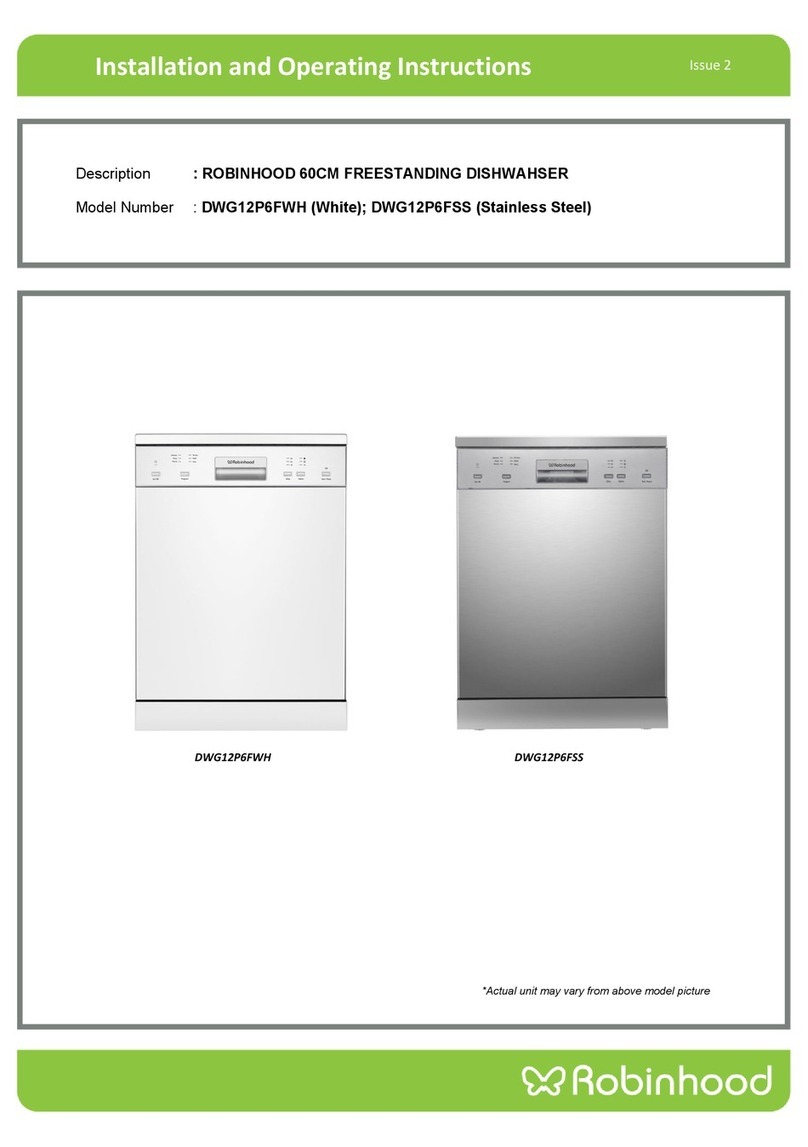
ROBINHOOD
ROBINHOOD DWG12P6FWH Installation and operating instructions

ETNA
ETNA VW244HN user manual
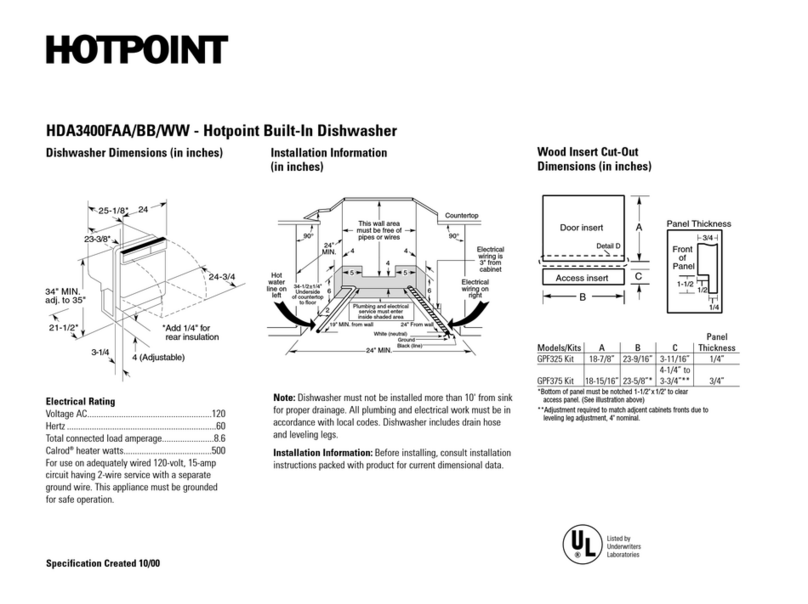
Hotpoint
Hotpoint HDA3400FAA Installation information
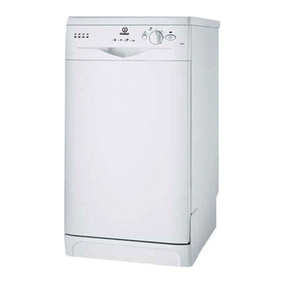
Indesit
Indesit IDL 40 Installation and use
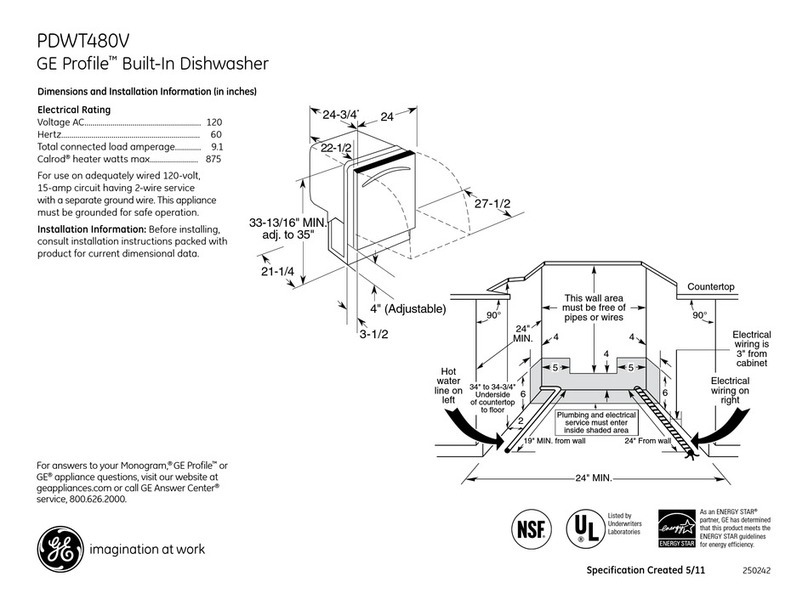
GE
GE Profile PDWT480VSS Dimensions and installation information
